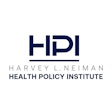Dear Imaging Leaders Insider,
Let's face it: As patients become increasingly concerned about the risks of radiation dose, more and more of them are looking to the internet to learn about the issue. But the information they're finding -- on YouTube, for example -- may not be correct, according to a presentation given April 21 at the American Roentgen Ray Society (ARRS) meeting in Los Angeles.
That's why radiology and radiology professional organizations need to take the lead in spreading accurate information via social media platforms, said Dr. Ajit Goenka of the Mayo Clinic in Rochester, MN. Dr. Goenka focused specifically on CT in his talk, outlining results from a study he and his colleagues conducted to explore the quality of information about CT radiation risk found in videos on YouTube. Click here to learn what they discovered.
When you've read our featured article, check out what else is going on in the Imaging Leaders Community:
- Learn how CT has largely replaced radiography for many abdominal imaging applications.
- Find out what researchers from the U.S. National Cancer Institute have to say about interventional technologists' cancer risk.
- Discover how different U.S. states crack down on wayward physicians. (Which state is toughest may surprise you.)
- Read why the Medicare Payment Advisory Commission says imaging use rates have continued to drop.
- Get the scoop on how to avoid coding confusion on radiology claims.
- Learn more about payment rules from the U.S. Centers for Medicare and Medicaid Services for CT lung cancer screening.
As always, if you have a comment or report to share about any aspect of diagnostic imaging practice, management, administration, regulation, or financing, I invite you to contact me.




















